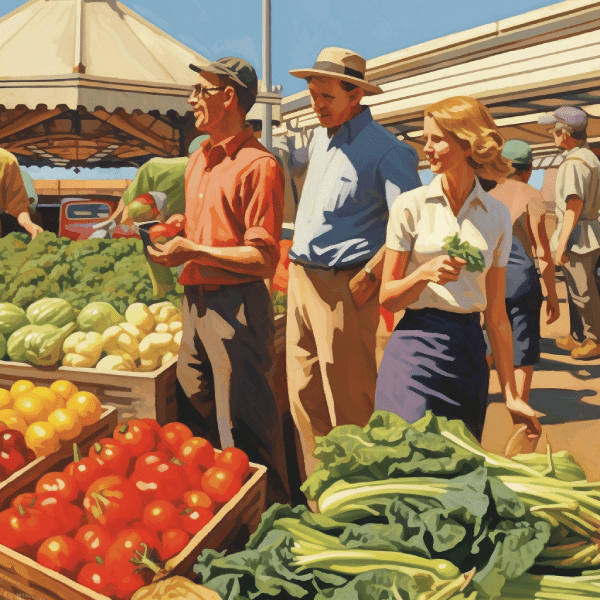Introduction
Permaculture is an approach to farming and agriculture that emphasizes sustainability and the interconnection of ecological systems. It was first introduced in the 1970s by Australian environmentalist Bill Mollison and has since gained popularity around the world as a more sustainable alternative to conventional farming.
It is based on the idea of creating a self-sustaining ecosystem where everything works together to support and nourish each other. This includes using natural and renewable resources to grow food, as well as recycling and reusing waste to reduce waste and pollution.
Permaculture has grown significantly in popularity in recent years, with thousands of practitioners around the world. According to the Permaculture Research Institute, there are now over 2,000 permaculture demonstration sites and projects in over 140 countries. Permaculture courses and workshops are also becoming more widely available, with online and in-person options for students of all levels.
Differences between permaculture and conventional farming
Conventional farming relies on monoculture, where a single crop is grown on a large scale, using synthetic fertilizers and pesticides to control pests and maximize yields. This approach often leads to soil degradation, water pollution, and loss of biodiversity.
Permaculture, on the other hand, focuses on diversity and regenerative practices. Rather than relying on chemicals, it uses natural methods to control pests and build healthy soil. It also emphasizes the importance of integrating animals and plants in the ecosystem, which helps to improve soil fertility and reduce the need for synthetic inputs.
Advantages of permaculture
Permaculture offers several advantages over conventional farming, including:
- Sustainability: It is designed to be sustainable, using natural resources to create a self-sustaining ecosystem that can continue to produce food indefinitely. This approach helps to reduce waste and pollution, and it also conserves natural resources like water and soil.
- Resilience: Permaculture systems are more resilient to climate change and other environmental stresses. The diverse mix of plants and animals in it’s system helps to create a stable ecosystem that can adapt to changing conditions.
- Health: Permaculture systems are often healthier for both people and the environment. By avoiding the use of synthetic chemicals, permaculture reduces exposure to harmful toxins and improves the quality of the food produced.
- Community Building: Permaculture emphasizes the importance of community building and sharing resources. This approach helps to create strong, resilient communities that can work together to support each other.
Principles and applications
Permaculture design principles include using natural patterns and processes, maximizing diversity, conserving resources, and creating closed-loop systems. It can also be applied to other areas, such as architecture, economics, and community development.
Soil Health: Permaculture focuses on building healthy soil as a foundation for sustainable agriculture. By using techniques like composting, cover cropping, and agroforestry, it can improve soil fertility and structure, reduce erosion, and increase water-holding capacity.
Healthy soil also sequesters carbon, helping to mitigate climate change.
Biodiversity: Permaculture systems are designed to maximize biodiversity and support a wide range of species. By using techniques like companion planting, polyculture, and agroforestry, it can create habitats for beneficial insects, birds, and other wildlife.
This can help to improve pollination and pest control, as well as create resilient ecosystems that can adapt to changing conditions.
Food Security: Permaculture can play a key role in creating more resilient and sustainable food systems. By emphasizing local food production, reducing waste, and using regenerative practices, it can help to increase food security and reduce the reliance on industrial agriculture.
It can also help to create more equitable food systems by empowering communities to produce their own food and share resources.
Climate Change: Permaculture can play an important role in mitigating the effects of climate change. By sequestering carbon in the soil, reducing emissions from industrial agriculture, and creating resilient ecosystems, it can help to reduce greenhouse gas emissions and adapt to changing weather patterns.
Conclusion
Permaculture offers a more sustainable and resilient approach to farming and agriculture. By emphasizing diversity and regenerative practices, it can help to reduce the negative impact of agriculture on the environment and create healthier, more sustainable food systems.
As we face the challenges of climate change and other environmental crises, permaculture offers a path forward that is grounded in ecological principles and emphasizes the importance of working with, rather than against, nature. By adopting regenerative agriculture practices, we can create a more sustainable and resilient future for ourselves and for generations to come.
Examples of permaculture farms and ventures
- Zaytuna Farm: Located in New South Wales, Australia, Zaytuna Farm is a permaculture demonstration site and education center founded by Geoff Lawton. The farm features a diverse mix of crops and animals, including chickens, ducks, goats, and bees. It also uses regenerative practices like composting and mulching to build healthy soil and conserve water. The farm has been recognized as a leading example of permaculture design and has trained thousands of students in sustainable agriculture.
- Finca Luna Nueva: Located in Costa Rica, Finca Luna Nueva is a 200-acre permaculture farm and eco-lodge that produces organic fruits, vegetables, and medicinal plants. The farm uses a variety of regenerative practices, including agroforestry, biochar production, and vermiculture, to create a self-sustaining ecosystem. It has been recognized as a model of sustainable tourism and was awarded the Ecological Blue Flag by the Costa Rican government.
- The Permaculture Research Institute: Founded by Bill Mollison and Geoff Lawton, the PRI is a global network of permaculture educators and practitioners. The organization offers a wide range of courses and resources on regenerative agriculture design and sustainable living. It has also established demonstration sites and projects around the world, including in Jordan, India, and Australia.
- Polyface Farms: Located in Virginia, USA, Polyface Farms is a family-owned permaculture farm that uses regenerative practices to produce grass-fed beef, pastured poultry, and eggs. The farm has been recognized as a leading example of sustainable agriculture and has been featured in numerous documentaries and books on the subject.
Permaculture farms and ventures like these demonstrate the effectiveness of regenerative agriculture in producing food and other resources in a sustainable way. According to a study published in the journal Renewable Agriculture and Food Systems, permaculture farms can produce yields that are comparable to conventional farms while using fewer inputs and producing less waste.
Another study published in the Journal of Sustainable Agriculture found that permaculture farms can improve soil health and biodiversity, which can help to mitigate climate change and other environmental issues.
Overall, permaculture offers a promising approach to creating more sustainable and resilient food systems.



